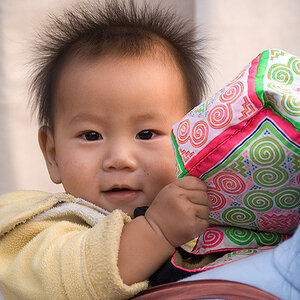Navigation
Install the app
How to install the app on iOS
Follow along with the video below to see how to install our site as a web app on your home screen.

Note: This feature currently requires accessing the site using the built-in Safari browser.
More options
You are using an out of date browser. It may not display this or other websites correctly.
You should upgrade or use an alternative browser.
You should upgrade or use an alternative browser.
How important is image stablization?
- Thread starter crowl31
- Start date
- Joined
- Dec 16, 2003
- Messages
- 33,896
- Reaction score
- 1,853
- Location
- Edmonton
- Website
- www.mikehodson.ca
- Can others edit my Photos
- Photos NOT OK to edit
IS...it's a great feature. If you can afford an IS lens, I highly recommend it.
IS fights against camera shake. The rule of thumb is that to avoid camera shake blur, you should use a shutter speed that is 1/the focal length of the lens. So for a 200mm lens, you would want a 1/200 shutter speed. Many people also say that the crop factor of most DSLR cameras should be taken into account. So for a 200mm lens, you would want a 1/320 shutter speed.
IS gives you the ability to shoot at slower speeds without the associated camera shake blur. Canon says that you can expect up to three or four stops with their newer IS technology. Realistically, it's more like two or three stops....but at three stops...you can get sharp shots with a 200mm lens at 1/40...maybe slower. That's pretty freaking good.
Following this logic, IS is much more beneficial on longer lenses than it is on shorter lenses. I've used a 100-400mm lens with IS...and when you are looking through the viewfinder and you activate the IS...the difference is amazing.
Now...all that being said, IS will not help to freeze subject movement. It's all well and good that you can get sharp shots at 1/40 or 1/15...but if your subject is moving...then you will still get blur. Only a faster shutter speed will freeze both camera shake blur and subject movement blur. So if your intention is to shoot sporting events or kids running around...IS will help but it won't be a miracle cure.
Bottom line...if you can afford it, get it...you won't regret it.
IS fights against camera shake. The rule of thumb is that to avoid camera shake blur, you should use a shutter speed that is 1/the focal length of the lens. So for a 200mm lens, you would want a 1/200 shutter speed. Many people also say that the crop factor of most DSLR cameras should be taken into account. So for a 200mm lens, you would want a 1/320 shutter speed.
IS gives you the ability to shoot at slower speeds without the associated camera shake blur. Canon says that you can expect up to three or four stops with their newer IS technology. Realistically, it's more like two or three stops....but at three stops...you can get sharp shots with a 200mm lens at 1/40...maybe slower. That's pretty freaking good.
Following this logic, IS is much more beneficial on longer lenses than it is on shorter lenses. I've used a 100-400mm lens with IS...and when you are looking through the viewfinder and you activate the IS...the difference is amazing.
Now...all that being said, IS will not help to freeze subject movement. It's all well and good that you can get sharp shots at 1/40 or 1/15...but if your subject is moving...then you will still get blur. Only a faster shutter speed will freeze both camera shake blur and subject movement blur. So if your intention is to shoot sporting events or kids running around...IS will help but it won't be a miracle cure.
Bottom line...if you can afford it, get it...you won't regret it.
Groupcaptainbonzo
TPF Noob!
If you have a f1.0 30mm lens and live on the equator Image Stabilisation is NOT an issue.
If you have an f8 500mm lens and live near a large northern city, then it is a REALLY BIG issue.
For me (Mostly about f1.4 ish to f5.6ish. And from 17mm to 300mm Mid UK . YES BUY IT ......... N O W ! ! )
If you have an f8 500mm lens and live near a large northern city, then it is a REALLY BIG issue.
For me (Mostly about f1.4 ish to f5.6ish. And from 17mm to 300mm Mid UK . YES BUY IT ......... N O W ! ! )
Mike_E
No longer a newbie, moving up!
- Joined
- Jan 26, 2007
- Messages
- 5,327
- Reaction score
- 266
- Can others edit my Photos
- Photos OK to edit
There is an accessory that has been around for years that will beat built-in image stabilization to hear and gone. 
Keagle
TPF Noob!
- Joined
- Sep 2, 2007
- Messages
- 161
- Reaction score
- 0
- Location
- Gloucestershire, England
- Website
- www.kurtispoole.com
- Can others edit my Photos
- Photos OK to edit
Ooo! Lemme guess...I get 3 right? #1...Tripod! 
JerryPH
No longer a newbie, moving up!
- Joined
- Oct 14, 2007
- Messages
- 6,111
- Reaction score
- 15
- Location
- Montreal, QC, Canada
- Can others edit my Photos
- Photos NOT OK to edit
Ooo! Lemme guess...I get 3 right? #1...Tripod!
#2... lean the camera against something solid like a wall or desk
#3... lean your body against something solid (wall, tree, bench, etc...), and hold your elbows tight against your body and hold the camera firmly in your hands and press firmly (don't go nuts here... lol), against your face, press shutter upon the slow controled exhale after taking a nice deep breath.
None of these issues will help much if you are trying to reduce motion shake due to sitting in a moving car. IS or VR help a lot in that situation.
RacePhoto
Pete
- Joined
- Dec 29, 2006
- Messages
- 811
- Reaction score
- 93
- Location
- Wisconsin
- Website
- peteklinger.com
- Can others edit my Photos
- Photos NOT OK to edit
There is an accessory that has been around for years that will beat built-in image stabilization to hear and gone.
#4 I have one. A Bean Bag! :mrgreen:
#5 Monopod?
Just wanted to add to the obvious, a good tripod...
IS works. IS consumes batteries faster, if you don't need it, turn it off.
Ever shoot anything low light where you are forced to be hand held? Then yes, you want IS. Worth the price in saved shots.
ThePup
TPF Noob!
- Joined
- Oct 12, 2007
- Messages
- 108
- Reaction score
- 0
- Location
- Western Australia
- Can others edit my Photos
- Photos OK to edit
If you have a f1.0 30mm lens and live on the equator Image Stabilisation is NOT an issue.
Erm... What does the equator have to do with it? Camera shake is caused by hand movements, not corillis or anything similar...
Alex_B
No longer a newbie, moving up!
- Joined
- Aug 30, 2006
- Messages
- 14,491
- Reaction score
- 206
- Location
- Europe 67.51°N
- Can others edit my Photos
- Photos NOT OK to edit
Erm... What does the equator have to do with it? Camera shake is caused by hand movements, not corillis or anything similar...
I think he was referring to the light being strong at the equator
But there are still dusk and dawn, even there ...
ThePup
TPF Noob!
- Joined
- Oct 12, 2007
- Messages
- 108
- Reaction score
- 0
- Location
- Western Australia
- Can others edit my Photos
- Photos OK to edit
I think he was referring to the light being strong at the equator
:blushing:
See, there's why I take crap photos, I think technically, not artisticlly
patrickt
TPF Noob!
- Joined
- Sep 22, 2007
- Messages
- 317
- Reaction score
- 3
- Location
- Oaxaca, Mexico
- Can others edit my Photos
- Photos OK to edit
I like image stabilization. In old churches and museums, where tripods aren't allowed, it's very useful. I'm not technically inclined, I just take pictures, so I can't say with any confidence how many stops it helps but it helps.
I don't have any long zooms but even with a 200mm it helps.
I like and use my tripod but it isn't practical in every situation. The same goes for my bean bag, although my 3-year old nephew loves the bean bag. I'm glad I spent years without image stabilization because I got pretty good at stabilizing the camera.
There is no magic pill but it all helps.
I don't have any long zooms but even with a 200mm it helps.
I like and use my tripod but it isn't practical in every situation. The same goes for my bean bag, although my 3-year old nephew loves the bean bag. I'm glad I spent years without image stabilization because I got pretty good at stabilizing the camera.
There is no magic pill but it all helps.
usayit
No longer a newbie, moving up!
- Joined
- Nov 15, 2003
- Messages
- 9,521
- Reaction score
- 347
- Can others edit my Photos
- Photos OK to edit
IS is a very nice feature to have... but it is what it is...
Your first line of defense is basic old time tested photography techniques. IS will get you a little more on top.
Big Mike summed it up.
Personally.. IMHO... I have it on my two zooms.. I like it... but it is so freaken hyped up in sales.
Your first line of defense is basic old time tested photography techniques. IS will get you a little more on top.
Big Mike summed it up.
Personally.. IMHO... I have it on my two zooms.. I like it... but it is so freaken hyped up in sales.
Groupcaptainbonzo
TPF Noob!
Erm... What does the equator have to do with it? Camera shake is caused by hand movements, not corillis or anything similar...
Although not 100% accurate in all situations or at all times . There is at least a tendency to get better sunlight at the equatorial regions. Usually the availability of light allows for a faster shutter speed ( assuming that similar equipment is being used, and that the extra available light is not being used in order to take advantage of a higher ASA/ISO or a smaller apperture or similar activity. Because the shutter is open for a shorter period of time when compared to the original scenario specifiying a lesser amount of light. (That of the more northern latitudes where (for the sake of the argument) we are assuming that a prevalence of cloud is slightly more the accepted level of normality). the amount of blur caused by the movement of the camera during the time in which the shutter is open, is reduced. Not totally, but often to a degree where (Depending upon the amount of enlargement used in the image which is being percieved by the viewer at the specific time in question ) it is at least not obvious enough to be of a level where the encroachment upon the visual cortex is not of a detrimental level.
I hope this clears up any obvious difficulties engendered by my previous rather general (Almost to the point of flipant stupidity) statement.
Should there be any further misgivings unearthed by my rather short original comment , please inform me of what they might be , so that I can furnish a far more detailed account of my meaning. thus negating the necessessity for anyone to use common sense in the interpretation of my proffered statements.
Thank you.
Dave Hoffmann
TPF Noob!
- Joined
- Nov 6, 2007
- Messages
- 18
- Reaction score
- 0
- Location
- Bel Air, MD
- Website
- www.davehoffmannphoto.com
- Can others edit my Photos
- Photos OK to edit
Depends on what you are shooting. For sports, IS is not needed, for the shutter speeds used eliminate the need for image stabilization.
If you shoot weddings, then you'll want to get IS for you'll be shooting in very low-light situations and most likely will not be using a monopod.
If you shoot weddings, then you'll want to get IS for you'll be shooting in very low-light situations and most likely will not be using a monopod.
Most reactions
-
 428
428 -
 287
287 -
 282
282 -
 266
266 -
 222
222 -
 198
198 -
 182
182 -
 179
179 -
 164
164 -
 164
164 -
 150
150 -
 130
130 -
 120
120 -
 95
95 -
I
94
Similar threads
- Replies
- 2
- Views
- 137


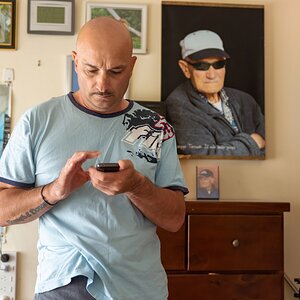
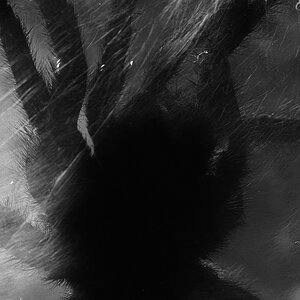
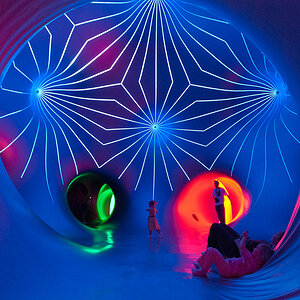


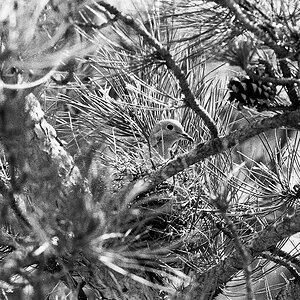


![[No title]](/data/xfmg/thumbnail/32/32700-18534997be82e5150c566a9e67a00471.jpg?1619735602)
